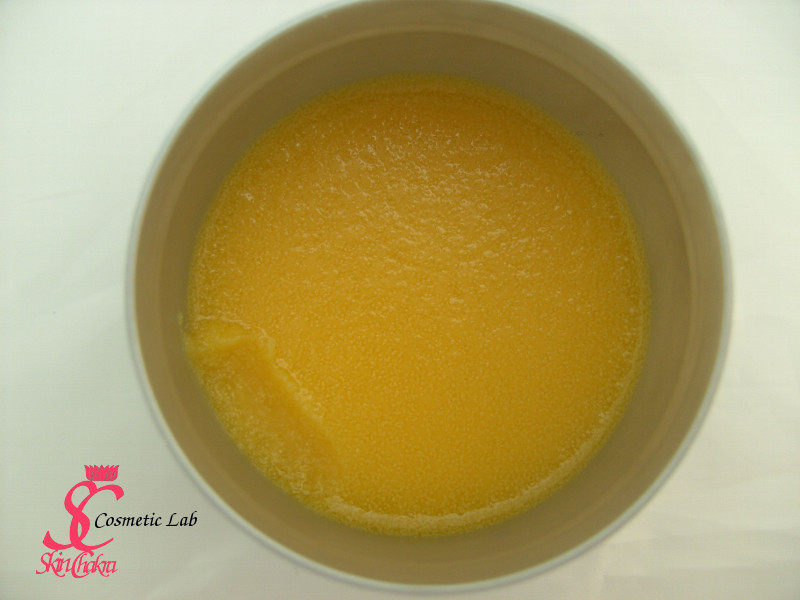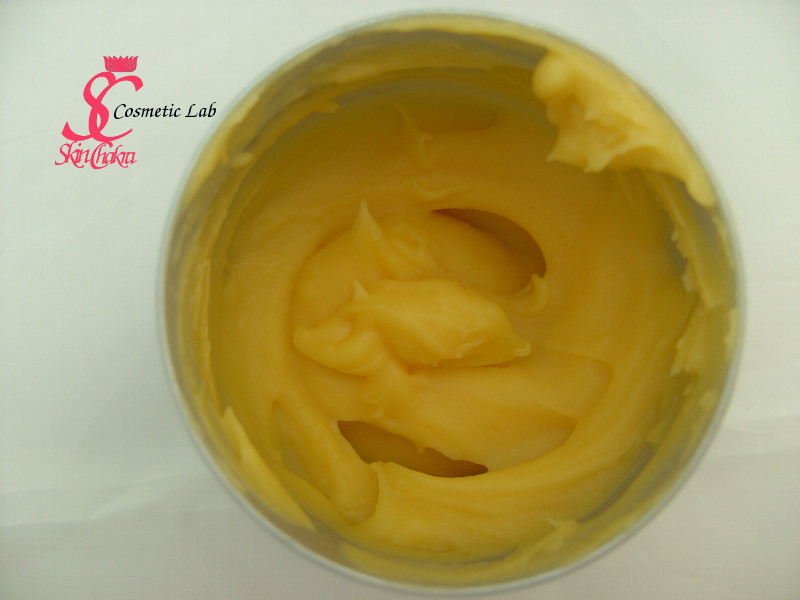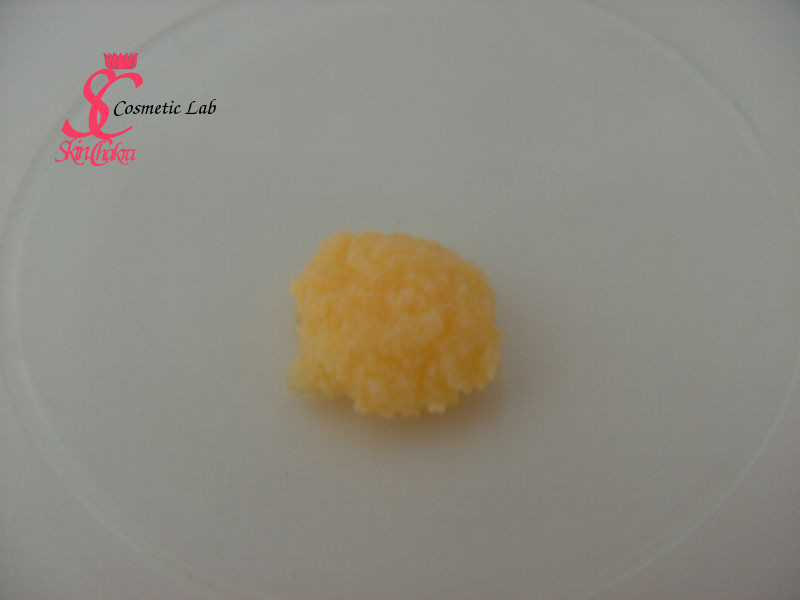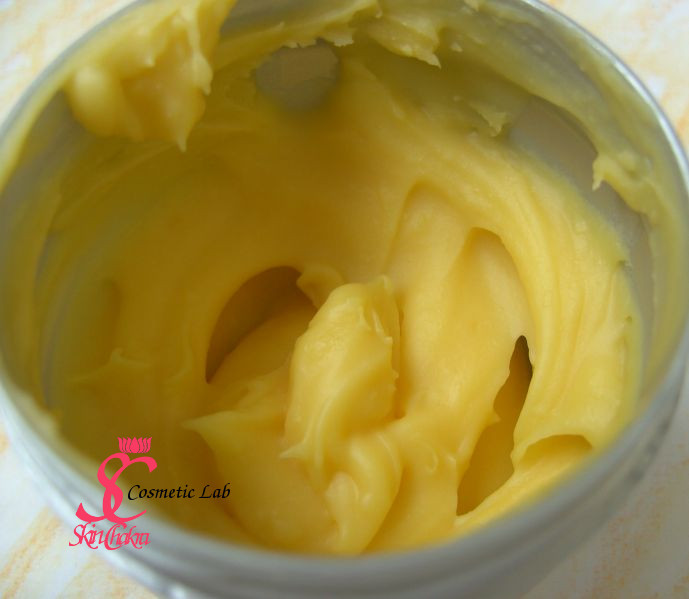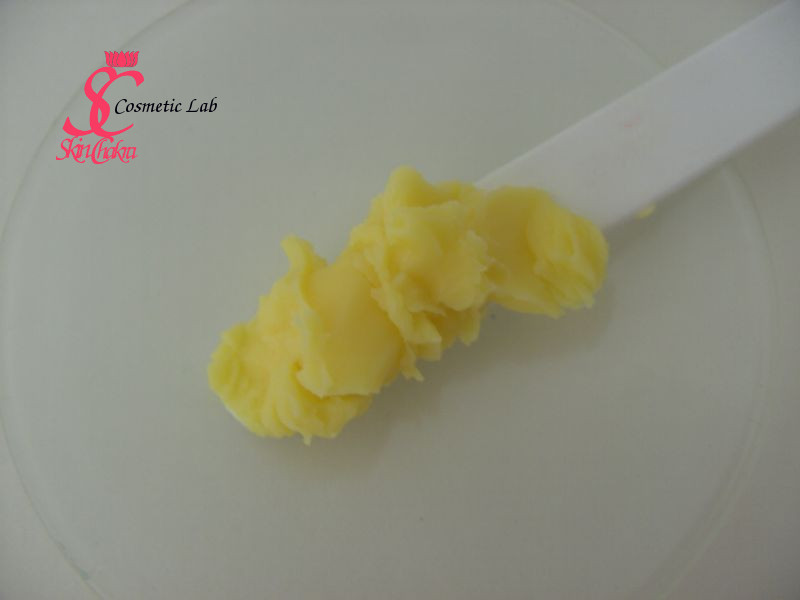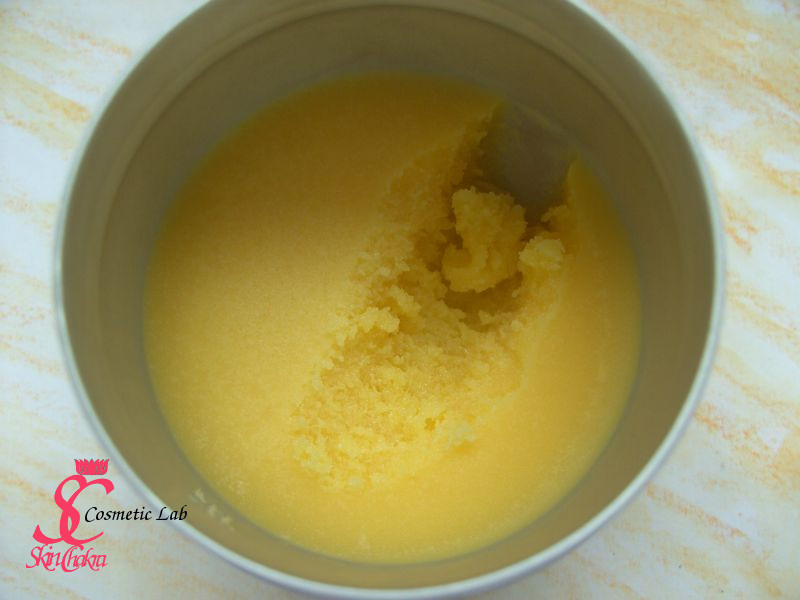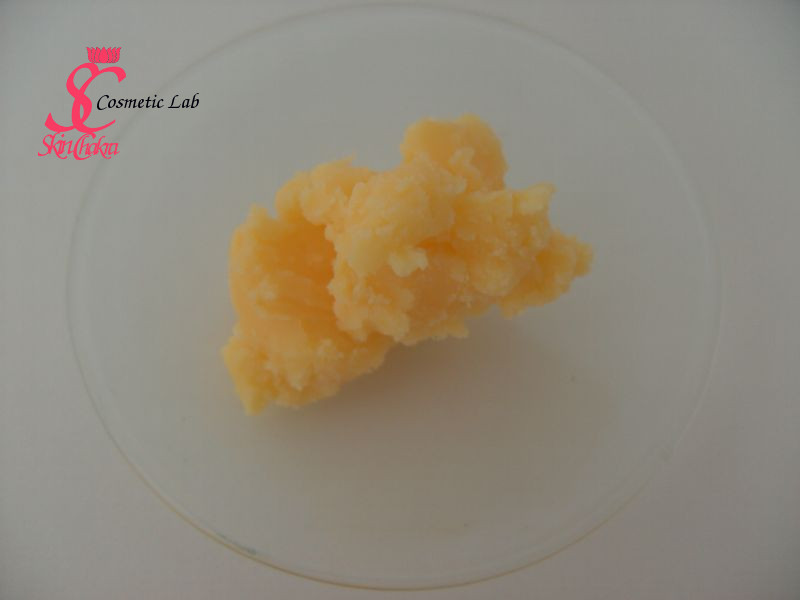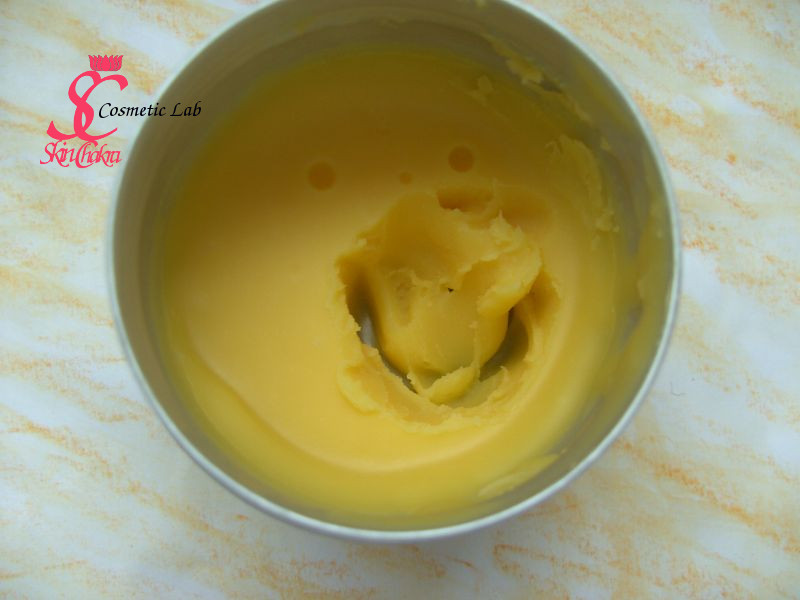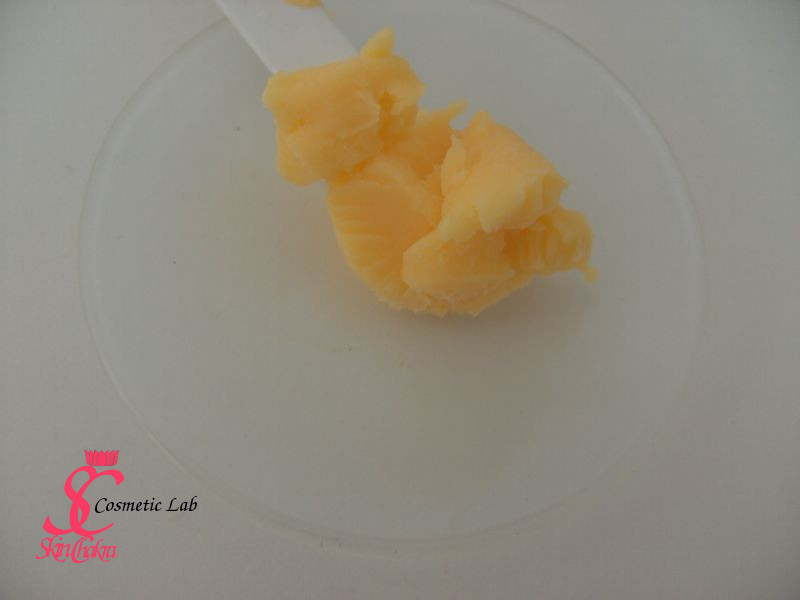I've promised to write a post about avoiding graininess in butters and balms a long time ago....
Mittwoch, 18. Februar 2015
So you want to avoid graininess in your butters and balms?
Winter (we're in northern hemisphere) is an excellent time to create balms and butters. The more you create, the more the risk of frustration with grainy or even greasy products. We've had hundreds of discussions about avoiding graininess and improving the skin feel (reducing greasiness) and I promised to write a post for a rapid reference. It is always easier to find a blog post compared to a Facebook, Linkedin or other social media discussions.
Almost all blog posts, tutorials and problem solving recommendations I've read focus on the heating process, some even mention blending but so far I have not seen any recommendation considering the cooling process. This is however, according to my experience has a more significant impact on the consistency and skin feel of the final product than the heating phase. And all whom I have suggested to modify their cooling process were satisfied with their results.
Crystallization and graininess
As you melt butters and waxes, you're melting complex compounds and no single ingredients. Different components in the butter or wax have slightly different compositions, melting and crystallization points. Melting doesn't happen at a single point, (compared to salicylic acid for example) but rather in a range of temperature. This is why we use titre point instead of melting point for waxes and butters. As you cool down the balm or butter, it's the same. Different components solidify/ crystallize at different temperatures, unless you can provide a uniform temperature through the whole container, some ingredients crystallize and cause that graininess or some bumps and clumps that you sometimes observe in butters and balms. The graininess and this non-uniformity has an impact on the skin feel as well. If the clumps and grains are too coarse the butter wouldn't have a smooth and silky skin feel and most often these butters have a very greasy feel. I've often observed that people suggest adding starch or other additives to overcome this problem. My experience shows however, that you don't need any starch or Zinc oxide or other additives to improve the skin feel. A good butter is refatting but should not feel greasy as you apply it. Anyway, this is something you shall try and judge the results yourself according to your blend. Try this procedure for a very small batch and observe the results in two weeks and one month to find the best solution for your individual combination of ingredients. This is a very rough procedure only to show you the impact of cooling on the product appearance and consistency.
Procedure:
We tried a very simple and basic recipe. The solid butters and fats (shea butter, cocoa butter and babassu oil) were melted in a water bath @ 45oC. Then as the beaker was still in water bath (but no heating anymore), liquid oils were added and the mixture was gently blended. Then as the butter cooled down and @ around 35oC we added the essential oils. As we ran this experiment, the lab temperature was 21oC and we've hat a relative humidity of about 10%.
Here is the recipe we tried:
54,0% Shea butter (BUTYROSPERMUM PARKII BUTTER)
5,0% Cocoa butter (THEOBROMA CACAO SEED BUTTER)
10,0% Babassu oil (ORBIGNYA OLEIFERA SEED OIL)
16,0% Macadamia nut oil (MACADAMIA TERNIFOLIA SEED OIL)
6,5% Annatto seed powder in sunflower oil (HELIANTHUS ANNUUS SEED OIL and BIXA ORELLANA SEED)
5.0% Calendula infusion in jojoba oil (CALENDULA OFFICINALIS FLOWER EXTRACT and SIMMONDSIA CHINENSIS SEED OIL)
1,0% Turmeric infusion in sunflower oil (HELIANTHUS ANNUUS SEED OIL and CURCUMA LONGA RHIZOME EXTRACT)
1,0% Vit E (TOCOPHEROL)
1,0% Tangerine essential oil (CITRUS RETICULATA PEEL OIL)
0,5% Ginger oil (ZINGIBER OFFICINALE ROOT OIL)
This blend was then divided into 5 jars:
1- Kept @ R.T. (21 oC) without stirring
2- Kept @ R.T. (21 oC) with gentle stirring
3- Kept in the fridge @6 oC without stirring
4- Cooled @6 oC under stirring
5- Kept @ R.T. under stirring and as the butter started to solidify was put into fridge without any .further stirring.
The samples were left overnight, then all were brought to room temperature. We've made photos after 24 hours.
Sample 1- The one kept @ R.T without stirring (after 24 hrs)
Sample 2- The one kept @ R.T with stirring (after 24 hrs)
Sample 3- The one kept in the fridge without stirring (after 24 hrs)
Sample 4- The one that was cooled under stirring (after 24 hrs)
Sample 5- Stirred @ R.T till it started to harden and then put into fridge without any further stirring (after 24 hours)
What do you think about their appearances? Well samples 2 and 5 have the best appearance and consistency, it is as well quite obvious from the photos. Sample no. 3 (the one kept in the fridge without stirring) shows those unwanted and frightening graininess. Sample 1 is still semi-fluid and full of graininess. Sample 4 is relatively smooth but rather hard.
We kept all these samples further @ R.T. and then judged them once more after 10 days.
Sample 1- The one kept @ R.T without stirring (after 10 days)
Sample 2- The one kept @ R.T with stirring (after 10 days) Look how smooth it is. Here another view:
Sample 2- The one kept @ R.T with stirring (after 10 days)
Sample 3- The one kept in the fridge without stirring (after 10 days). Here deep in the butter you can observe the graininess even better compared to the surface. Another view:
Sample 3- The one kept in the fridge without stirring (after 10 days)
I think this is the graininess that you dislike so much and that disappoints you often as you prepare balms and butters.
Sample 4- The one that was cooled under stirring (after 10 days) - This one is still very smooth, it might not be quite visible in this photo but the butter has an excellent consistency
Sample 5- Stirred @ R.T till it started to harden and then put into fridge without any further stirring (after 10 days)- Look how smooth it is even in the bulk of the butter
Here is another view of sample 5.
I hope you can distinguish the difference. Our best samples are those who were kept under stirring. You should try this procedure to find a suitable production procedure for your recipe. Only keep in mind:
1-prepare the sample in small batches, then you can scale up as you find one or two suitable methods
2- Depending on the temperature and humidity in your lab, your results might be quite different to ours. If your lab temperature is above 25 degrees you may try gently stirring the butter in a cold water bath. As the butter reaches a trace you can stop stirring and put the butter in the fridge.
We would like to hear about your experiences and results and mastermind a suitable solution for you.
Thanks for being here.

